If you just love gardens with WOW-Factor, the season always seems to come to an end way too soon. Trees, shrubs, and perennials are traditional favorites for creating layers and lots of landscaping interest, but there can be a periodic lapse between flowerings that may cause things to go a little dull.
For the benefit of giving your garden a WOW kick in the pants, here are three tips that can help you create an impact and extend your seasonal color blast:
Flowering Bulbs: The key to using flowering bulbs correctly is planning, planning, planning. The primary challenge is that bulbs do not create WOW when you plant them. You have to wait! So, as you consider what bulbs to plant, picture in your mind when they’re going to come up and what color and texture they’ll add to your garden.
There are spring flowering bulbs that start blooming as early as the end of March and others that don’t start blooming until late May or even early June, so you need to keep that in mind when you are ordering your stock. You can create bouquets that bloom all at once or ones that have staggered bloom to extend color in one area over several weeks. Those early bloomers may be all that's going on in April, so plant heavy. Once you get into middle spring, you'll have perennials and shrubs kicking their flowers into the mix so that you can be more strategic with your placement of these later blooming choices
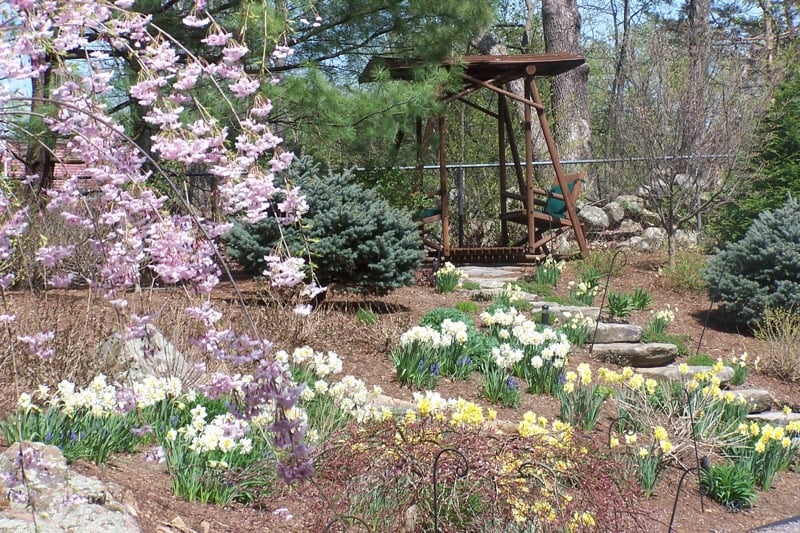
Too chilly to use the pool, these daffodils make for an enticing view from back windows until the weather warms up enough to get outside.
Be sure to plant late in the fall, after the squirrels and chipmunks have finished collecting all their seeds and nuts, so they don't dig up your bulbs – flowering bulbs also do better when they’re planted as the weather gets colder. In my neck of the woods – Eastern Massachusetts – we plant between Halloween and Thanksgiving for best results. Honestly, the later, the better.
Tulips come in a variety of sizes and shape; from teeny-tiny, small and short, big and tall, single flowers, bouquet flowers, and double flowers – so shake it up and add several types. Be vigilant in the spring and apply some Irish Spring soap shavings or Liquid Fence as they start to push up to keep the bunnies and deer away.
The critters don’t like daffodils, so load up the garden with those. And they aren’t just yellow! There are pure whites, creamy whites, and bicolor choices with whites, yellow, pinks, salmons, orange. They come in minis, smalls, mediums and large. They come in double petal varieties, multi-flowering on one stem, and even fragrant. So don’t limit yourself! Choose your viewpoint and select a size, shape, and color that will show up the best in your gardens.
Don't stop there! Now think about the accent choices – Bedding Hyacinths for crazy color and fragrance that deer leave alone. Allium – in all heights and sizes – blue, white, purple, and even yellow! Another beautiful bulb that resists the deer AND the bunnies. For more critter proof bulbs try Scilla and Camassia, both naturalize well.
Now that you have early spring handled, time to think about the doldrums of summer. There are also summer flowering bulbs such as dahlias, gladiolas, and canna lily that can add crazy color and texture with bold flowers and fabulous foliage helping to brighten up any summer garden. The cool thing is most of these last and keep showing off right up until the tail end of the season. Use them right in the perennial garden, in cutting gardens, and even in veggie and herb beds to get a mid to late season boost.
Accent Planters: What I love most about planters is that the pot itself can be architecturally and visually appealing, especially if you choose interesting or unusual shapes, designs, textures, and colors. A sturdy, well-made planter can add beauty and interest year-round. Change your plantings to match the season and consider ending the year with a plant that will last and look appealing in winter – something with an eye-catching bare-branch color or shape, or a funky evergreen. You can even add decorations to accent the season. If you prefer a mixed and layered look, use cut evergreen branches of pine, cedar, and spruce, add red and white twigs, berried branches and pine cones for a real winter WOW look.
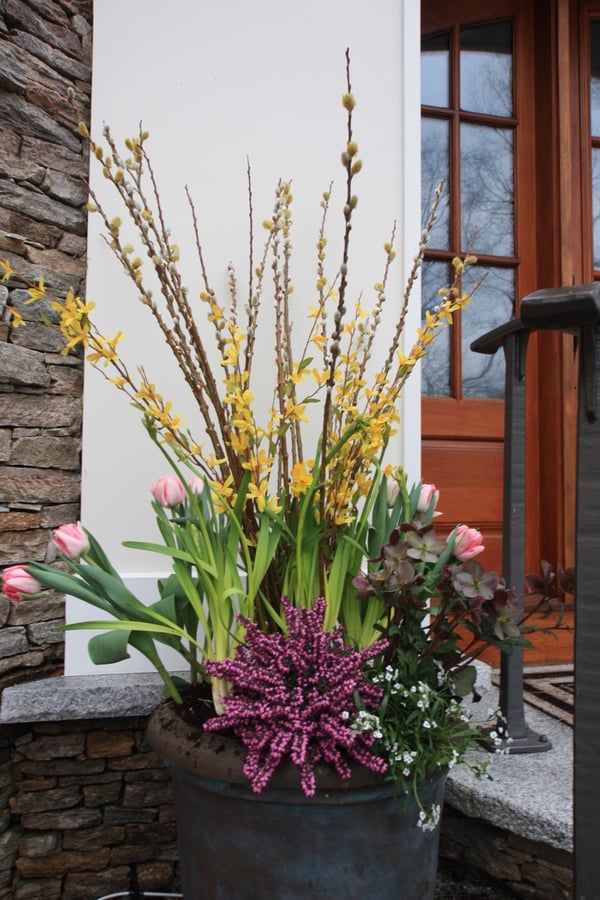
Planters filled with bulbs and early color in late March to give the entryway some WOW while we wait for spring to pop!
Just two attractive planters on each side of your front door can lend enormous aesthetic appeal. Big planters placed slightly away from the house create an even more welcoming and dimensional entryway that draws the eye – and the visitor – in.
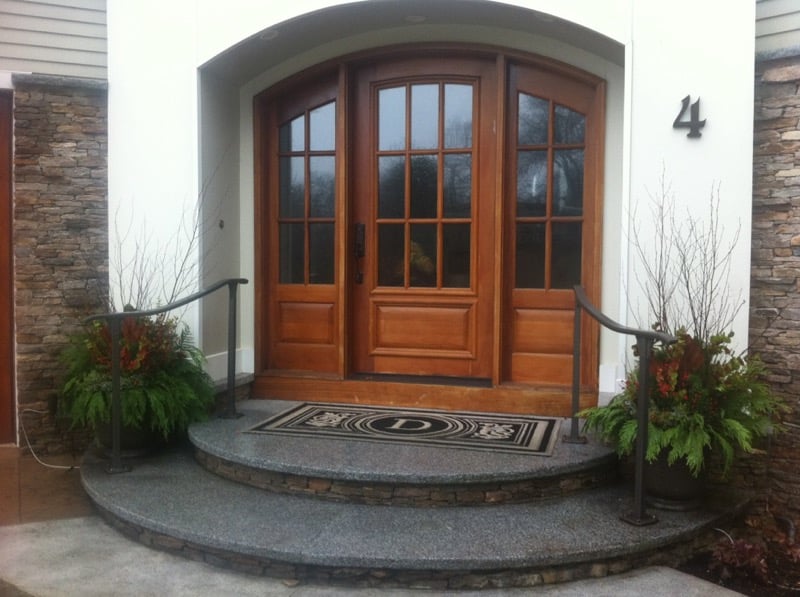
Same planters filled in late November with cut evergreens, colorful branches, berries and accent pieces to extend the season of WOW right through the winter.
You can even place a large planter in the center of a garden and build your entire garden around it. It’s like having a piece of art in the middle of your show of foliage and flower. Filled with seasonal color in each season, the garden planter will add a burst of color and additional WOW when the rest of the garden has gone quiet.
Planters are great in corporate settings, too. A bold or elegant planter design can help reinforce your company’s identity as a dynamic and vibrant place to work or do business.
Bedding Annuals: Flowering annuals are a classic tool used in the landscape. Gardeners often use them to fill in the edges of a bed to add a pop or splash where there are no perennials. I will say that gardeners are divided on annuals IN the gardens, however. Some think it is garden blasphemy to add annuals where there are perennials. Some find it to be too much work and a bother. I get it, and there is a lot to do already.
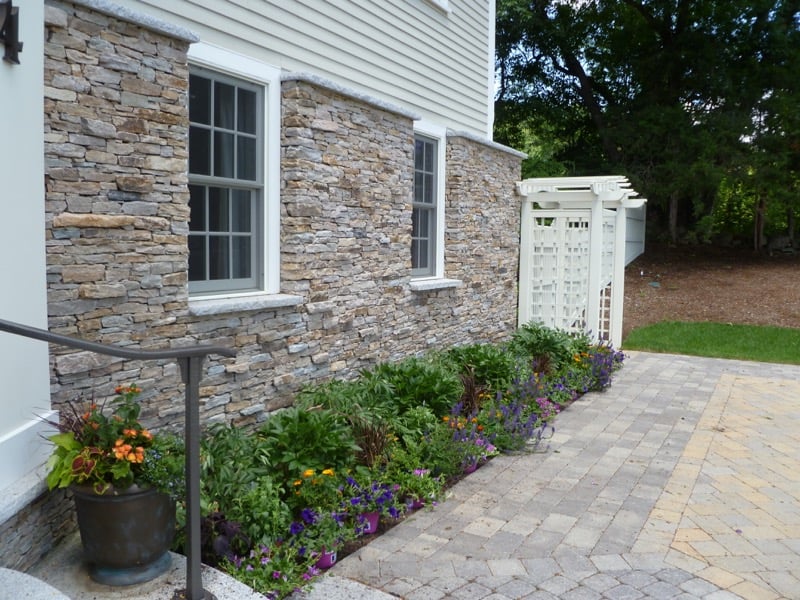
That same front entry from above, loaded with peonies for late spring to early summer bloom, now also loaded with annuals to keep the color going all season long.
I must confess, I am in the camp that likes to mix it up and be bold with the use of annuals when and where it makes sense right in the middle of the perennials. I first learned this trick when I visited my brother in Alaska. It was many years ago, and it was in July. It was light ALL the time – like 22 hours of light!! I was blown away by their annual displays; they were HUGE and they were colorful and lush. Guess that's what you get when you have endless sunshine!
If you have a lull in your WOW-Factor and are willing to incorporate just a few essential annuals into your perennial garden, you will find that they will add blasts of color during that predictable summer dull period! Add butterfly weed, caster bean, cosmos, cleomes, verbena, and if you dare…even add some sunflowers to your perennial garden – they’ll explode in summer and early fall to extend your garden’s colorful life right when it wants to roll over and go dull.
Any one of these three tips will help you add some zing to your garden or landscape – use all three, and you'll amp up the WOW factor all season long!
TWEETABLE TIP: Amp up your garden WOW with these three season extenders – bulbs, planters, annuals! http://ctt.ec/M0a10+



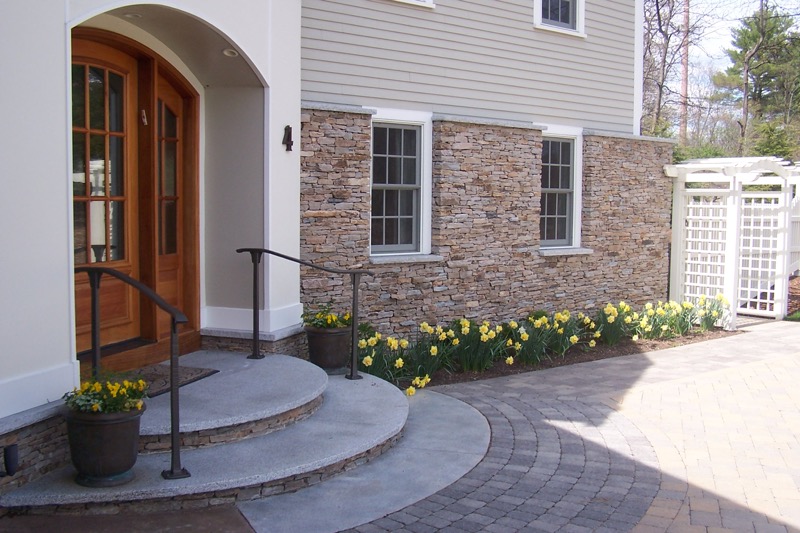





Leave a comment